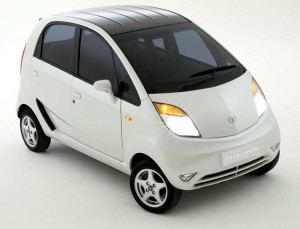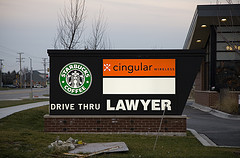Earlier this year I was at a conference and was lucky enough to hear Dr. R.A. Mashelkar present an inspiring address on Gandhian Engineering. A concept that incorporates the principles of doing more (providing more features, more services, more value) for less cost to make it more accessible and available to much larger numbers of people. Hence the phrase “More for Less for More”.
 An example of this was the launch earlier this year of Tata’s radically innovative car, the Nano.
An example of this was the launch earlier this year of Tata’s radically innovative car, the Nano.
Speaking at the unveiling ceremony at the 9th Auto Expo in New Delhi, Mr. Ratan N. Tata, Chairman of the Tata Group and Tata Motors said, “I observed families riding on two-wheelers – the father driving the scooter, his young kid standing in front of him, his wife seated behind him holding a little baby. It led me to wonder whether one could conceive of a safe, affordable, all-weather form of transport for such a family”. He challenged his organization to think differently about the problem and they did. Only a few years later they delivered the Tata Nano, a “comfortable, safe, all-weather car, high on fuel efficiency & low on emissions” for approx US$2000.
Tata received more than 200,000 orders in the 3 week period following its launch in March. Today they can produce approx 3,000 cars per month. A small number considering the demand .
However with increased production capacity being addressed, we will see over time improvements in quality and consistency, and the addition of features likely to be provided at an even lower price. And of course the competition will follow benefiting greater numbers of people.
Already there are announcements by a number of car manufacturers that they too will be entering this low end/low emission category including the bigger, more well-known names. The Japanese car industry turned the car industry on its head once before. They lead with price and followed with quality. The same is happening with Korean cars now and we will soon see the same with Chinese and Indian automobile brands to follow. Large-scale change can and will occur and accessible and affordable cars will be available to those who require a safe form of transportation, and who were previously locked out, in the near future.
The challenge is certainly there for businesses to think about how best to serve and care for the 6.8 billion people we have on this earth. There are two aspects which drives the need for businesses to broaden their current thinking:
- The ubiquitous nature of the internet & wireless technologies – the increasing speed of technology for increasingly commoditized (and thus reduced) pricing is making it easy for people all around the world, including within developing nations, to connect and transact with anyone, anywhere, anytime. The flattening of the world opens up additional markets – more product choices for people, more potential customers for business. The greater the global demand, the more solutions will exist in logistically moving or upgrading goods and services around the world.
- The expanding social and environmental conscience – the ever-increasing pressure to evaluate our footprint on the world and the increasing gap awareness in wealth between nations. This will continue to grow as the consequences of our current policies and actions continue to become better understood, and the forums for voting with your feet become more common.
With increased competition as the world continues to flatten, businesses will require greater creativity and innovation from their people. Without a model for constant and differentiated innovation, businesses will suffer and ultimately become irrelevant. Increased competition from the developing nations will continue to place pressure on value for money.
And as price drops due to competitive and consumer pressures, so will margins. Thus there will be a requirement (not just an opportunity) to sell to more people together with an increased requirement to build meaningful, personal relationships with customers. This will drive the way organizations will think about their product or service offerings in the future.
A decision will need to be made by businesses.
Do they cater for a few customers and charge a premium or do they rethink their business model and approach with the objective to do “more for less for more”? Both models will require continuous innovation and competition will require them to define how they are going to keep doing it better than anyone else.
I applaud the technology, medical, science and engineering organizations who are already thinking this way. Interestingly this approach increases profits for most of those organizations. But real revolution starts with awareness by a bunch of like-minded people that things need to change for the better. Revolutionaries’ prophesize through education, communication and real example, encouraging more and more of the general population to follow and take action.
It poses an interesting question to every one of us: What responsibility can we take in our every day decisions to stamp out oppression, poverty, hunger, poor health, and environmental damage?
In every decision we make – either business or personal – how can we make an impact on providing equal opportunities for people to thrive no matter where they are located? Can we offer more for less for more people?
The questions may seem big, the actions we make may seem little, but every one of them will make a positive difference.

